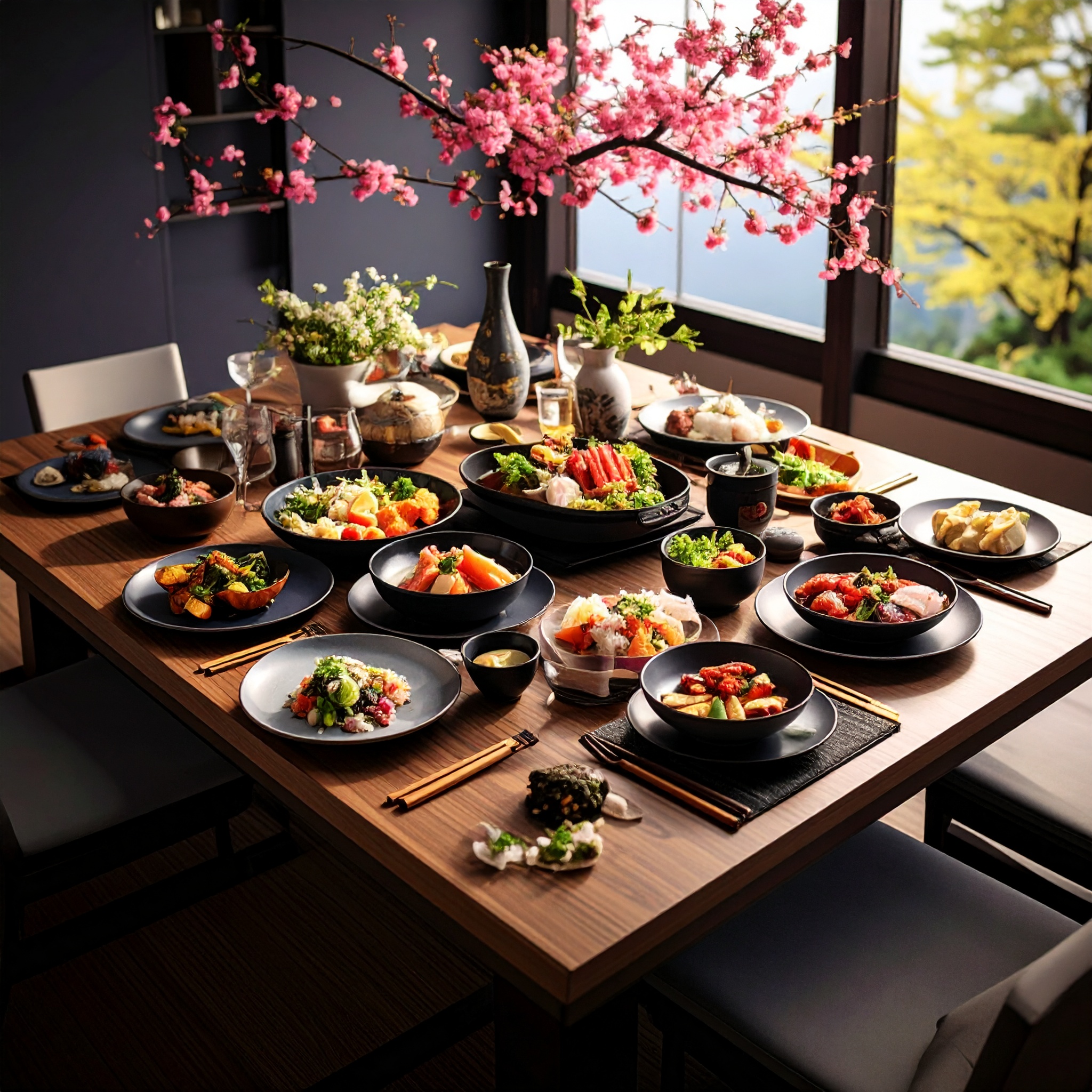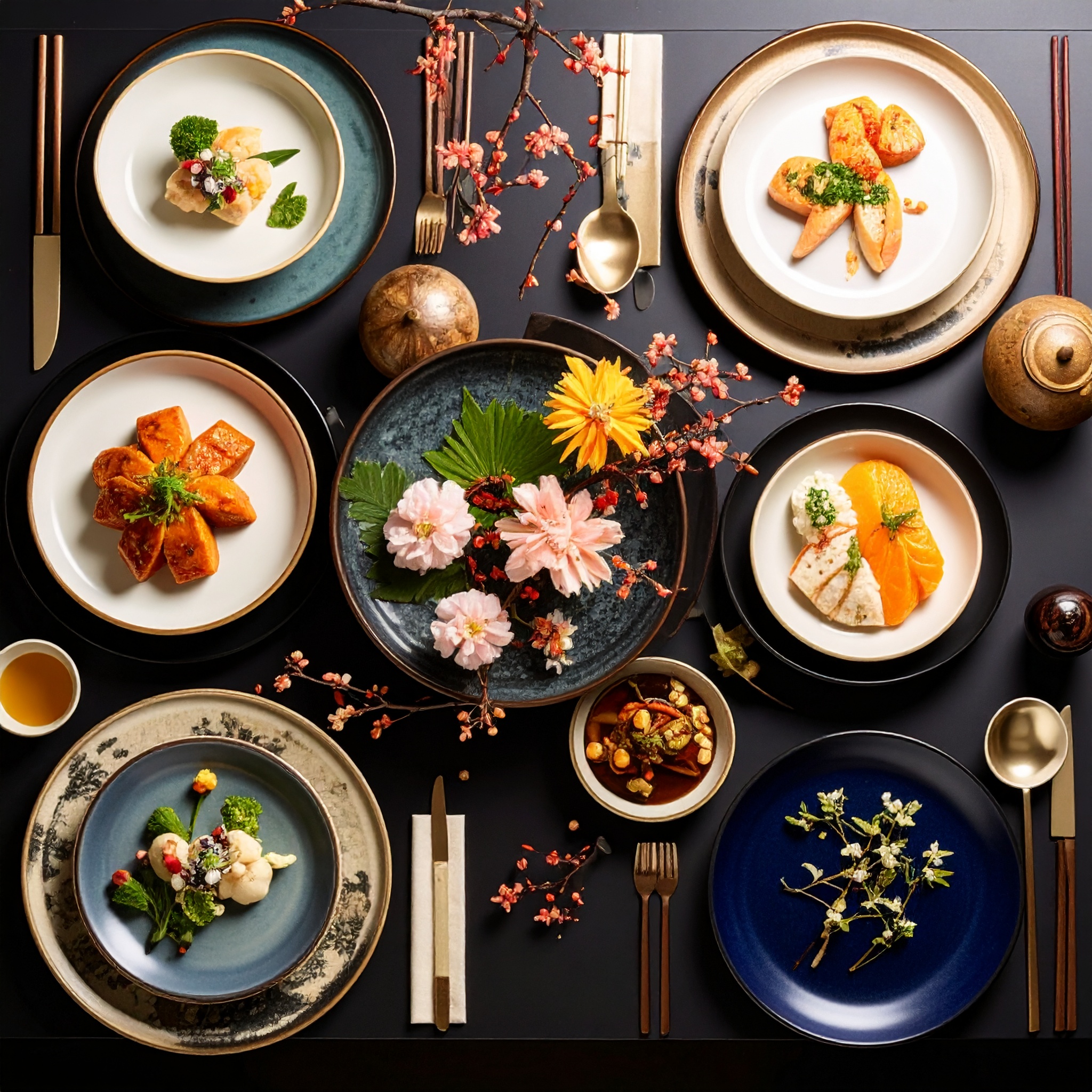In today’s world, where most fruits and vegetables are available year-round in supermarkets and convenience stores, the true luxury is found in savoring the seasons—choosing to eat what is naturally in season. This is not about indulgence in rare or high-priced ingredients, but rather about embracing the harmony between nature and daily life, a philosophy deeply embedded in traditional Japanese food culture.
Japan’s clearly defined four seasons provide a rich variety of ingredients that are best enjoyed only at specific times of the year. Tender bamboo shoots and rapeseed blossoms in spring, fresh potatoes and green soybean in early summer, chestnuts and mushrooms in autumn, and hearty daikon radishes and napa cabbage in winter. Sharing a table with such seasonal treasures enriches not just the body, but the soul.
Seasonal ingredients also offer the advantage of peak nutritional value. Cultivated in climates to which they are best suited, they are richer in vitamins, minerals, and antioxidants, and naturally more flavorful and aromatic. Their seasonal abundance also means they are more accessible in price—making high-quality dining both enjoyable and economical.
For instance, spring tables feature mountain vegetables and bitter greens that help detoxify the body after winter. In summer, water-rich vegetables like tomatoes and cucumbers help cool the system. Autumn brings robust harvests of rice and root vegetables, while winter offers warming produce ideal for hearty hot pots. These ingredients intuitively align with the body’s seasonal needs, making for a naturally balanced and healthful lifestyle.

Cooking with seasonal ingredients demands less technique than one might imagine—because nature has already done much of the work. When ingredients are at their peak, their flavor, texture, and aroma shine through with minimal intervention. Simple techniques—salt boiling, grilling, simmering, or preparing in dashi-based broths or miso soup—are often the most effective ways to bring out their essence. It is where both the mastery of chefs and the quiet excellence of home cooking are revealed.
To experience seasonality at the dining table is not merely to enjoy good food—it is to feel the passing of time through the senses. A delicate nanohana (rapeseed blossom) side dish as cherry trees begin to bloom, chilled eggplant with the end of the rainy season, or a mushroom rice dish as autumn leaves fall—each reflects a moment in time, subtly marking life’s transitions with beauty and intent. It adds quiet joy and meaning to everyday life.
In Japanese cuisine, this sensitivity to seasonality is paramount. In kaiseki or kappo dining, not only the ingredients but also the presentation, dishware, and garnishes express the changing seasons. Ayu (sweetfish) served in bamboo during early summer, autumn appetizers adorned with crimson maple leaves, or winter steamed dishes presented in hollowed yuzu—each is a poetic gesture that brings nature itself into the meal. This approach reflects a uniquely Japanese aesthetic sensibility rooted in harmony and transience.
Today, there is renewed appreciation for seasonal eating through the lenses of sustainability and food provenance. Choosing locally grown, in-season ingredients reduces environmental impact and deepens the connection between consumer and producer. Visiting a morning market or local farm stand becomes more than a transaction—it becomes a cultural experience, a way of engaging with the story behind the food.

Seasonal ingredients also enrich the quiet moments of family life. Peeling fresh corn with children, receiving homemade umeboshi from grandparents, or gathering around a table to enjoy grilled pacific saury in autumn—each of these experiences is tied to a particular time of year. These moments become memories, and those memories, in turn, color the seasons of our lives. The flavors we remember are often inseparable from the people and conversations that accompanied them.
In today’s fast-paced world, it is easy to overlook the changing of the seasons. And perhaps that is why the act of eating seasonally now feels more precious than ever. Looking up when a vegetable or fish is in peak season, taking just a little more time to prepare a meal—these small gestures elevate an ordinary day and reconnect us with the rhythms of nature.
To savor what is in season is to live fully in the present. Amid the noise and rush of modern life, allowing a seasonal flavor to awaken the senses and bring a quiet joy to the dining table may be the ultimate form of luxury.




